
Whether you are raising goats as pets or for show, or because you want to harvest your own goat milk or meat, there is a lot of planning involved. Goats are famously low-maintenance animals, primarily when compared to other farm animals like horses and cows.
While goat housing is relatively simple, goat fencing, and enclosures can present a challenge. And everyone who keeps livestock eventually has to become something of a veterinarian, and learn how to spot and treat various symptoms in their animals.
Table of contents
- Basic Goat Supplies
- Dairy Goat Supplies
- Farm Accounting and Management
- Small Farm Equipment
- Farm Equipment Storage
- Goat Shelters and Enclosures
- Farm Transportation Supplies
- Goat Feeding Supplies
- Goat Health Supplies
- Goat Training Equipment
- Goat Grooming Supplies
- Goat Kidding Supplies
- Goat Milking Supplies
- Goat Care And Supplies Video
- Conclusion
This guide will help you plan for all the supplies and equipment you need to keep goats, no matter what breed or for what purpose. It’s a handy way to anticipate everything you need to keep and care for healthy goats.
Basic Goat Supplies
Whether you are raising show goats or meat goats, there are some supplies that all goats need. Remember that goats are extremely social animals, and should never be kept alone. For almost any purpose, you will need a minimum of two does and a wether.
Dairy goats will need to be bred regularly, which means you will need to have or rent access to a buck, and you will have kids every year. Even if you are thinking of keeping a single goat as a pet or show animal, they will need companion animals of some kind.
When purchasing goat supplies, plan ahead for the size of herd you anticipate, but remember that your herd is likely to grow over time.
Goat Shelter

All goats need shelter, but these needs vary depending on the size of the herd, your climate, and what kinds of goats you are raising. Some people keep goats comfortably in a large doghouse, while some need a whole barn for their herd. Goats prefer to sleep together for warmth and comfort, and need a space that is warm, dry, clean, and safe to sleep at night. Every goat shelter should offer:
- Protection from predators. If you have predators in your area, your goats need to be protected at night
- Protection from weather. In mild climates, goats may only require a simple, three-sided shelter. In cold climates, they should be kept warm
- Clean bedding. Bedding provides warmth and comfort, and also absorbs urine and feces. Bedding can be made of straw or wood shavings, and should be changed frequently
- Adequate space. If your goats have ample outdoor ranging area, then you should allow 10-15 square feet of indoor shelter at night. If your goats have less room outdoors, then give them 20 square feet per goat of sleeping space, and another 30 square feet per goat as an exercise area. If you are raising large meat goats, they will need more space per goat
- Adequate ventilation. While goat shelter must provide protection from wind, it should also be a ventilated space
Some other considerations for shelter include:
- Space for feeding and watering. All goats should be able to eat and drink at the same time, and goats should have access to water at all times
- Ease of cleaning. You will need to muck out your goat shelter, so it should have adequate space for you to work. Choose flooring and bedding that is easy to clean
- Space for kidding. If you will be kidding your goats, every doe will need a 4—5 square foot pen for kidding
- Space for work and storage. You will also need space for storage of all your goats’ bedding, food, and supplies, and space for kidding, hoof trimming, milking, and all the other ways you will interact with your goats. While it isn’t necessary to incorporate all that additional space into your goats’ overnight shelter, it is worth considering your own needs for space and storage, as well as the goats’
Goat Fencing

Fencing is absolutely necessary, but goats are hard on fences. They are prone to chewing, leaning, and standing on fences, and very likely to jump over them. Goats often attract predator animals, so sturdy fencing is needed to keep goats in and wildlife out.
Finally, during breeding season, even goats that were previously easy to contain are capable of incredible feats to escape a fence. To contain and protect a goat, a fence should be:
- At least 48 inches tall, but taller if you have bigger goats or goats who like to jump
- Wire spacing of 4 inches or less, to keep out smaller predators like foxes
- Posts that 8-12 feet apart, with an 8 foot distance for big, tall, or strong goats
- Woven wire, rather than welded wire, which can withstand rubbing or chewing
- Place any bracing or supports on the outside, or goats will climb them
Remember to not place shelters, toys, or structures near the fence, since the goat will stand on them in order to jump over. An electrified wire may also deter jumping.
Goat Cage

In mild climates or for small herds, some people opt to place goat cages inside their shelter. In some cases, these cages are simply very large dog kennels. Goat cages allow individual goats to be separated while kidding or during breeding season, and offer additional protection from predators. Remember that a cage still needs to provide the warmth, water, and comfort of a goat shelter, and avoid caging goats by themselves outside of breeding season; they are social animals and prefer to be together.
Goat Medicine
All goats need medical care, and many treatments and medications are things you can administer yourself. In the beginning, it is best to consult with your veterinarian for advice specific to your needs and your goat herd, and determine how much and what kind of medical care you should administer yourself, and when to call the vet.
However, as your herd grows in size, it becomes expensive to call your vet for every incident, and you will save time and money by handling basic medical care on your own. Here are some basic goat medical supplies to have on hand:
De-wormer
Goats need constant deworming, on a regular schedule. It’s important to not only administer de-wormer, but also to alternate different worm treatments in order to eliminate different parasites, and provide regular rotation of high-quality pasture and forage to reduce parasite load.
Minerals
Depending on their diet and forage, goats usually require mineral supplements in order to stay healthy and prevent disease. In most cases, you can simply make mineral supplements available freely, and goats will consume as much as they need.
Baking Soda
Just as in people, a goat’s digestion can become too acidic. If you allow them free access to baking soda, they will naturally eat it to adjust their digestive pH balance.
Electrolytes
Keeping goat electrolytes on hand can help a goat more quickly recover from a variety of illnesses. Just as in humans, adding electrolytes to the diet can help a goat feel better more quickly.
Drencher
A drencher is a great piece of equipment to have on hand for administering de-wormer or other oral medications to goats.
Goat First Aid Kit
It’s a good idea to create a goat first aid kit, with medical supplies all in one place and ready to go in case of emergencies. A good goat first aid kit should include:
- Disposable examination gloves
- A drencher for administering oral medication
- Cotton balls
- Alcohol wipes
- Gauze bandages
- Elastic bandages
- Digital instant-read thermometer
- Syringes and needles for administering injections. You will need several sizes for different size goats and different medications
- Feeding tube with syringe
- Clippers for removing hair around injuries
- Sharp sterile scalpel
- Sharp sterile scissors
- Blood stop powder for hoof trimming
- Activated charcoal for accidental poisoning
- Milk of magnesia for digestive problems
Over time and in consultation with your vet, you will determine what kinds of medications are needed most often on your farm, and how to dose and administer them.
Goat Feeders and Waterers


Although goats are prized for being resourceful foragers, they will still need a regular supply of food from you, and will always need fresh water available. Food supply becomes even more important when you are raising dairy goats or meat goats.
The feed station should be large enough that all your goats can eat at once if they choose, and should keep the food off the ground; many goats will refuse to eat food from the ground. There are a huge range of feeder sizes and designs available.
Goat Halter
Goats should be trained from a young age to walk on a lead, whether you are taking them to pasture, tethering them in place, in preparation for cart pulling, or showing the animal. Goats are highly intelligent, and can be easily trained, despite their famous stubbornness. Some goats respond better to collars than halters, but halters are generally preferred for greater control of the animal’s head, without pulling on their necks.
Goat Cart
Goats can pull small carts and wagons, and are comfortable pulling loads that are up to twice their own body weight. If a goat will walk with a collar or halter, and is comfortable being handled, they can easily be trained to walk in a harness and pull a cart or wagon. If you want a working goat that can pull a cart, here are some things to keep in mind:
Choosing the Harness
In most cases, you can’t simply re-purpose a dog’s harness for a goat cart. The specific straps, rings, and attachments on a goat harness are intended for attaching to a cart or wagon, and help the goat brake, steer, and control the load. You need a harness designed for the right animal, and the right purpose.
Fit the Harness Properly
A poorly fitting harness may be uncomfortable or even unsafe for the goat.
Fit the Goat Cart Properly
The type of cart or wagon should attach securely and comfortably to the harness, using shafts instead of a rotating wagon handle. It should also be the right size for the goat, and neither too heavy to overload the animal, nor so light that they can’t brake or control it.
Goat Blanket
Goat blankets help to keep a goat clean, warm, and dry. Healthy goats with good shelter do not need blankets to keep them warm in the winter, but goats that need special care, or goats that need to be kept clean for a show, will need a blanket.
Goat Toys
Goats require healthy exercise, play, and stimulation that toys provide, and they are curious animals who will investigate, climb on, and explore any new element in their environment. Goats love toys that they can jump and walk on, like seesaws, wooden cable spools, stacks of wood pallets, wooden crates, or toys made of old tires.
They will also happily play with many dog toys, like ropes, balls, and other rugged toys. Make sure that any toys you give a goat are non-toxic and durable enough to withstand chewing or rubbing.
Goat Kidding Supplies
Kidding goats need space and supplies of their own. It’s best to get a kidding kit together ahead of time, so that you can be prepared. Storing all your kidding supplies in the same box, bin, or bucket ensures that you have everything you need in one place, whenever it is needed. A goat kidding supply stash should include:
- A goat first aid kit with basic medical supplies
- Potty pads for training dogs to help absorb moisture and clean up
- Fabric towels and paper towels, with one fabric towel for every kid you expect, plus an extra just in case
- Disposable examination gloves for handling kids and body fluids
- Baby wipes and hand sanitizer to help keep your hands clean
- Flashlights and headlamps even if you have good light in your kidding area, because you may need strong light below or behind the animal
- Sterile scissors for cutting the umbilical cord
- Instant-read thermometer to assess the health of the kids
- Needles and syringes in case medicine needs to be administered
- Betadine or Povidone scrub in case you need to scrub your hands and arms to reach inside the doe
- Suction bulb to help clear a kids’ nose and mouth if necessary
- Iodine or Chlorohexidine solution for the umbilical cord
- Floss to tie the umbilical cord
- A bottle or more of OB lubricant for animals in case you need to reach inside the doe
- Penicillin in case it’s needed
- Feeding tube with syringe to help with feeding problems
- Bottles and nipples in case they are needed
- Bucket of warm, soapy water
- Garbage bags for clean up
Plastic containers of various sizes for holding liquids and ointments during use. You may need to milk the doe, or use lubricant, and you will need a small container for the chlorohexidine, so a variety of empty containers will be useful.
If you accumulate all your supplies ahead of time and keep them in one place, and have the phone number of your veterinarian at hand, you’ll have everything you need to support your doe during kidding.
Show Goat Supplies
Showing goats is a great hobby and activity for the whole family. If you intend to show your goat, make sure check the expectations for your show early. Some shows require disbudding, shaving, or other regulations that you will need time to prepare for. There may also be requirements for your own attire and behavior, depending on the show. Show goats need quite a bit of grooming equipment, and usually require:
Hoof Pick and Hoof Trimmer
Goats need their hooves trimmed regularly, but it is particularly important before a show. Use an old toothbrush to scrub the hooves free of dirt and debris, before using the hoof pick to clean them more thoroughly. Then trim the hooves to get them show-ready.

Shears
Many goat shows require shearing, and shearing is usually part of goat care anyway. For a small herd, or for ordinary goats, you may simply shear them with scissors or hand shears. However, for show goats, you may want to invest in electric sheep shears that will produce a more clean, even result.
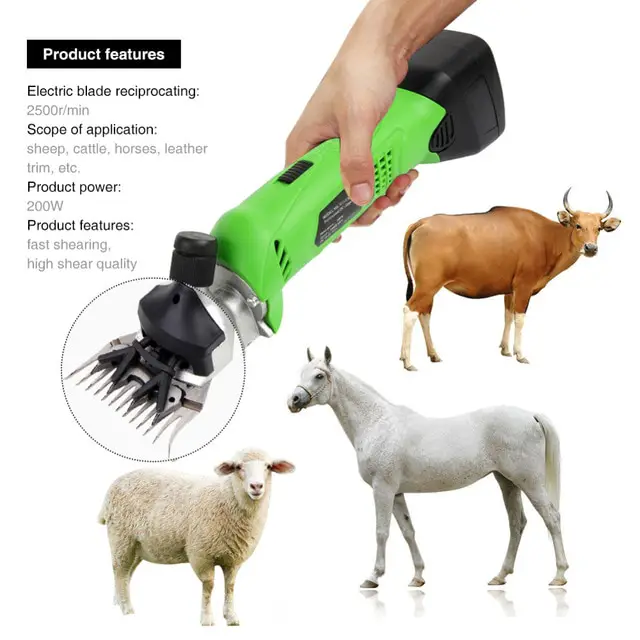
Brushes and Combs
To have a show goat looking its best, a variety of combs and brushes are needed. All goats need regular brushing to keep their coats clean and healthy, and brushing is a good time to check the overall health of the animal, giving you an opportunity to check for wounds and parasites. For regular goats, you will want to use a hard brush to remove mud and surface debris, and follow with a curry comb for better cleaning.

Show goats will often be bathed with water and shampoo, which removes some of that dirt ahead of time, so hard brushing may not be needed. For a show goat, after they have been bathed and dried, use a comb to gently de-tangle beards and tails. Follow with a soft brush to distribute natural oils and restore shine to their coat.
Goat Blanket
Once your goat is groomed and brushed, a goat blanket is a great way to preserve their coat until show time.

Show Halter
Most goat shows require you to walk your goat on a lead, and many people prefer to have collars or halters that are nicer for the show than those they use every day. Halters are often preferred over collars, because they allow you to keep the goat’s head up during the show, but if collars work better for your goat, they are usually acceptable as well.
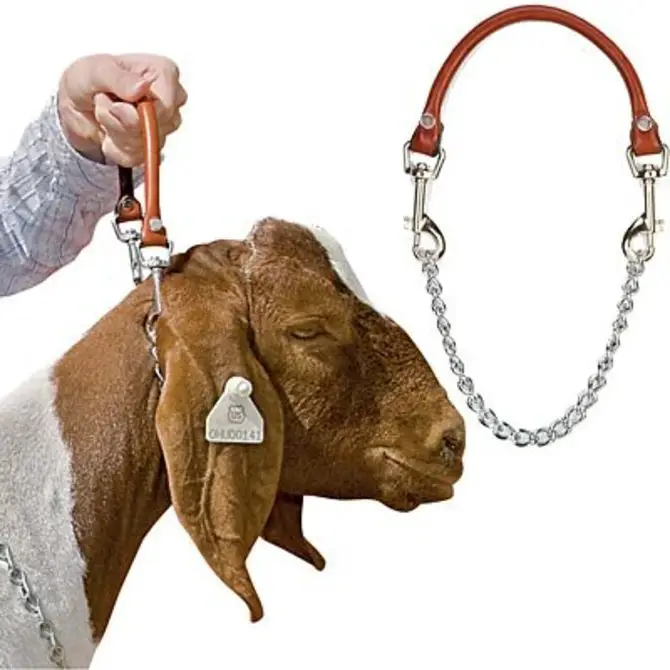
Dairy Goat Supplies
Dairy goats need special care from the inside out, and from birth to maturity. They need to be raised with a lot of care and handling, so that they are comfortable being milked. They need to be bred and kidded once a year, which requires special care, space, and equipment.
And they need excellent nutrition, for their kids and for their milk, so that they stay healthy year after year. Here are some of the things you need for a dairy goat:
Medicine
Dairy goats need to be in excellent health, so you may need to keep a range of nutrition supplements, antibiotics, and antitoxins on hand. Consult with your vet to determine how best to diagnose and treat medical issues with your goats, and how medical care affects milk quality.

De-wormer
All goats need regular deworming, but different deworming products have different guidelines for when and how they affect a goat’s milk. Make sure that your deworming products and regimen are compatible with your goat’s kidding and milking schedule.
To milk a goat, you will also need:

A Stainless Steel Seamless Milk Pail
Because goat’s milk has smaller solids than cow’s milk, it can settle into the seams in a pail and compromise cleanliness. Seamless milk pails are essential, and you may need a few of them in different sizes, depending on your goats and the season. Stainless steel is durable and easily sanitized, and is the best choice for milk.

Udder Wipes and Teat Dip
A dairy goat’s udders need to be kept clean and healthy, both before and after milking. Udder wipes are used on the udder and teats before milking, to keep the milk clean. Teat dip is used after milking, to keep the teats clean and healthy between milking.

A Stanchion with an Attached Feeder
In theory, you could tie a goat to any stationary object, but goats can be stubborn. A stanchion with a feeder is the most convenient way to keep a dairy goat in place and happy while being milked.

A Goat Hobble
While many goats will stand patiently for milking, particularly if you have a feeder available, some young or stubborn goats may need to be hobbled in order to milk them safely. A hobble is sometimes necessary, and always good to have available when needed.

Stainless Steel Milk Strainer and Disposable Filters
The raw goat milk needs to be filtered and cooled as soon as possible after milking. The filters are likely to quickly have an unpleasant smell, so disposable filters (or a coffee filter or paper towel) are idea.

Glass Jars and/or Freezer Bags
Goat milk should be stored in glass jars and labeled by date if you intend to drink it, because glass jars are easily sterilized. If you plan to freeze the milk, it can be placed into freezer bags and labeled by date.
If you are milking your own dairy goats, here are a few other things to keep in mind:
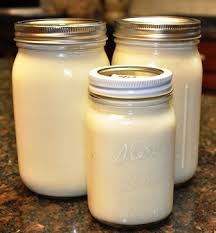
- You can milk multiple goats into the same seamless stainless steel milking pail, but after that, do not mix goat milk. For example, don’t mix warm fresh goat milk into cooled goat milk, or mix milk from different days
- Goat’s milk needs to be cooled to 38 degrees within an hour of milking. That means that the goats need to be milked, then the milk needs to be strained, and put in jars, labeled, and put in the freezer within an hour. Most home refrigerators are not cold enough to cool the milk quickly enough, so a freezer is best. Leave the milk in the freezer for an hour and then remove it before it freezes solid. It’s always a good idea to leave some extra room in the jar (and not fill it all the way), in case you do forget it in the freezer and it expands; a little extra room in the jar prevents explosions
- Always keep your goat milk cold, and don’t let it get warm or expose it to too much light
- Even if you are only milking goats for your own consumption, it’s a good idea to keep track of how much milk you are getting from each goat. Changes in milk production are normal, and keeping records lets you know what to expect. And some changes in milk production or flavor may be indicative of a problem with one of your does, so keeping track also helps you monitor the health of your goats
- Goat milk should be drunk within 7-10 days of milking. If you are making goat cheese or dairy products, the milk should be processed into cheese within 4 days of milking
Cleaning and Sterilizing Goat Milking Equipment
Generally speaking, experts recommend that you sterilize your milking equipment between every milking. That’s the main reason for using stainless steel and glass; they are non-porous and easy to clean. Since most dairy goats need to be milked twice a day, sterilization between every use can become very time consuming. The most efficient way to clean and sterilize your goat milk equipment between uses is:
- Rinse everything in cold running water. A cold water rinse beforehand helps to carry away any solid particles that may get “cooked” in place when exposed to hot water.
- Hand wash in hot water with dish soap, or use a dishwasher. Immerse your milking equipment in water that is at least 170°F for 30 seconds, then hand wash with soap. Or run milking equipment in dishwasher that rinses at 165°F-180°F.
- Prepare a tub or bucket with cool water and a small amount of bleach. Rinse clean milking equipment and containers in this diluted bleach water, and then let them air dry without rinsing or wiping the bleach off.
- If you have a larger-scale dairy goat operation that uses milking machines, always follow the manufacturer’s instructions on cleaning and maintaining the machines.
- If you are selling your goat milk to the public, check your state and local regulations regarding food safety and storage.
Meat Goat Supplies

Most meat goat breeds are larger and stronger than other goat breeds. This has consequences for all the supplies listed above: they need more space, a bigger shelter, stronger fences, more feed, and so on. If you are raising meat goats for profit, it’s important to do thorough research ahead of time.
You need to understand how many goats your land and forage can support, and what breed of goats will do best in your climate and with your space and forage available, and, most importantly, you need to determine whether there is a market for goat meat in your area, and how you will get your goats to market.
In America, most meat goat farmers struggle not with raising or caring for their goats, but with finding a distributor and a path to the marketplace. Most commercial slaughtering facilities are geared toward cattle and many will not accept goats. Commercial food products are held to high quality, labeling, and food safety standards.
Many Americans aren’t accustomed to eating goat meat, and there may not be much demand in your area. For these reasons, the most important thing you can do before embarking on a meat goat enterprise is to do a ton of research, be familiar with all your local food and agricultural regulations, and have a detailed business plan in place before you ever buy a goat.
Farm Accounting and Management
Every farm needs to keep accurate accounting records. Not only is it important for tax season, but it is also important to keep track of where your money is going and if your farm is profitable. Here are a few items that you will find helpful:
Courses and Books for Learning How to Handle Your Finances
Books and courses are excellent for helping to keep track of finances. Many books have guides in them, including pages which you can use to keep records or use as samples for creating your own record pages. Most accounting courses are offered online for reasonable prices and can teach you the ins and outs of goat farm accounting.
Livestock and Farm Management Software
In this digital age, software is an excellent tool to help keep up with your livestock and your farm management. Software can help you see trends in your herd growth, help you improve pasture management, track different events such as sales, medical treatment, breeding, etc., as well as keep detailed livestock husbandry records, better date-tracking for breeding/calving purposes, and much more.
Farm Accounting Software
While different from farm management software, the principle is essentially the same. Accounting software helps to keep track of money earned and spent and helps show trends that will be useful in the maintenance of the farm.
Farm Accounting Books
Accounting books are great for keeping accounting data. However, keeping records by hand can be more tedious than using software intended for farm accounting. Both are useful in their own ways, and some people find it easier to keep physical records.
Farm Apps
Farm apps are useful tools to have. You can track things in real-time, such as data on your fields, prices of feed, or breaking news about goat farming. Apps can also be used to do other useful things, such as identify things harmful to your livestock, like weeds in your pasture, or even use GPS to measure the area of your fields.
Farm Spreadsheet
Spreadsheets are crucial to keeping track of daily things, such as purchased/sold animals, breeding, feed purchases, veterinary dates and costs, and much more. Most of this can be bundled into your farm management or farm accounting software.
Small Farm Equipment
Small equipment is essential to maintain a working farm. Here is a list of things you will need to get started:
Portable Generator
Portable generators are just as described; they are portable and they can be used to power tools and other things that need electricity when an outlet is not available. A generator can be essential to help maintain working buildings or fences on the farm, but can also serve other purposes, such as powering cooling or heating systems in circumstances where power is not readily available.

Wheelbarrow
Wheelbarrows can have multiple uses. They can be used to remove waste from enclosures, to move loads of feed from one place to another, or to transport soil or any other myriad things. A wheelbarrow is a necessity on a farm.
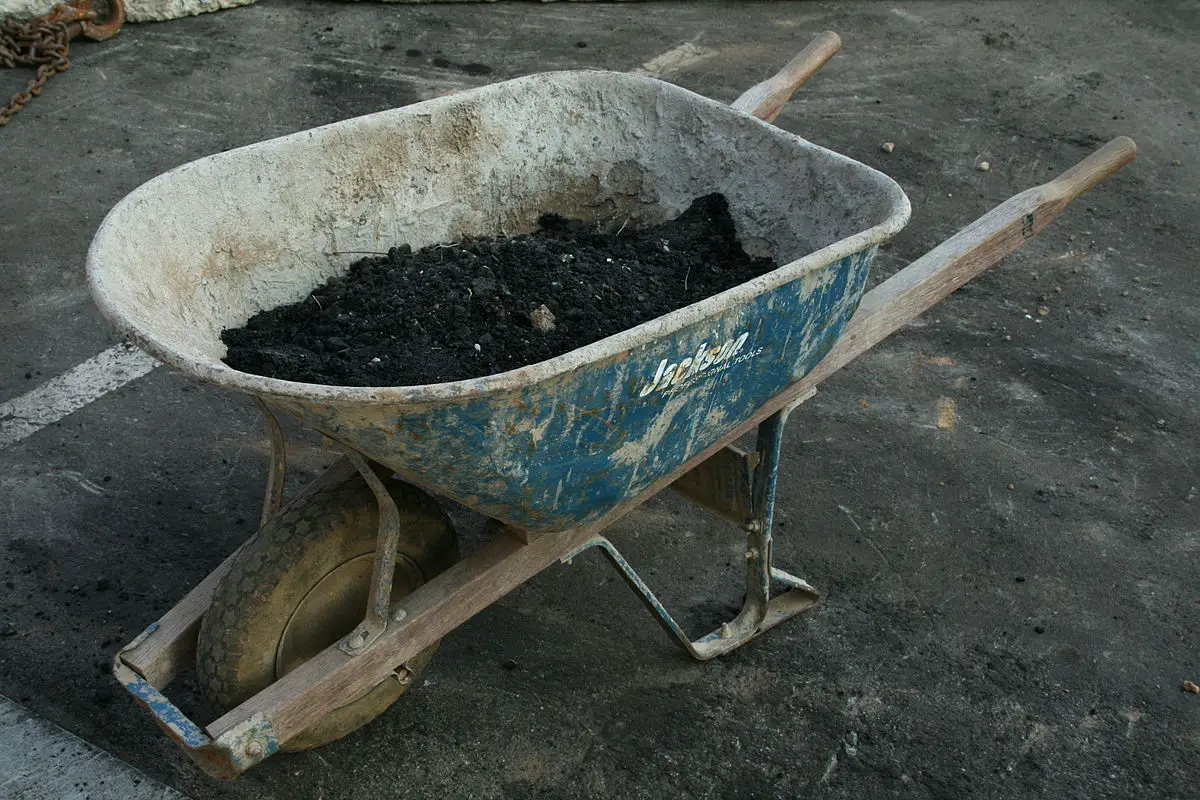
Garbage Cans
Farms will produce a lot of garbage. Good trash cans are a must. They need to be sturdy and resistant to pests, such as rodents, roaming dogs, coyotes, or raccoons.
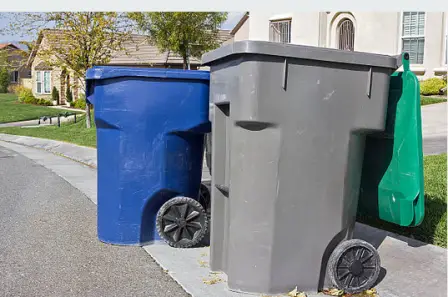
Lawn Mower
A good lawn mower is necessary for pasture maintenance. Mower attachments can be purchased with tractors, along with other attachments that make your tractor multi-purpose.
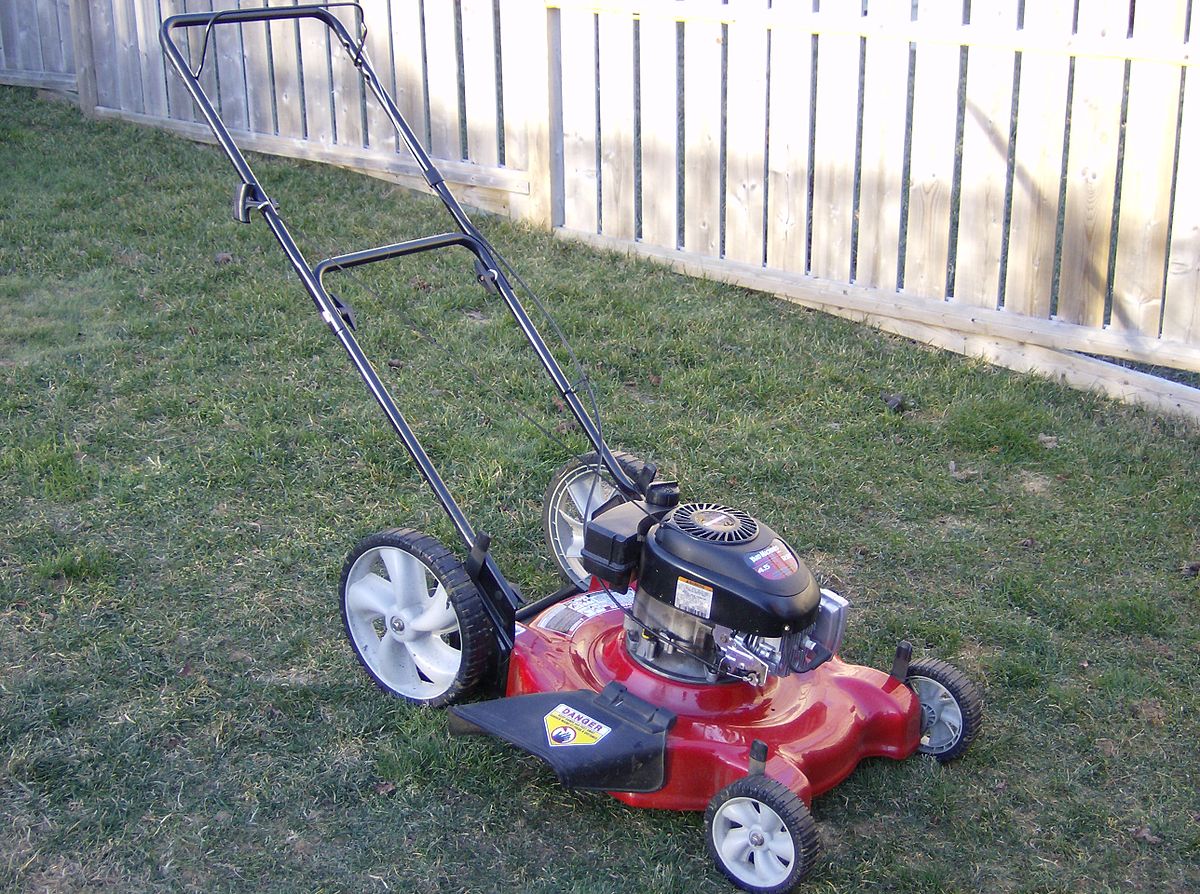
Manure Spreader
Goats produce a lot of manure, so it is helpful to have a manure spreader. The manure can be used to fertilize unused pasture. A spreader can often be purchased as a tractor attachment.
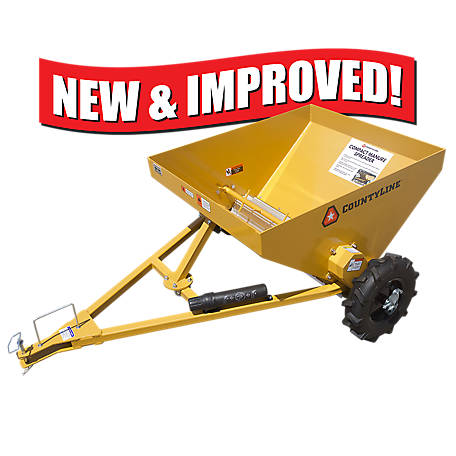
Farm Jack
A farm jack is a good, multi-purpose tool to have on hand. It can be used to lift objects, pull objects from tough spots, such as shrubs, fence posts, etc., as well as be used in conjunction with tractors and other 4-wheel drive vehicles.
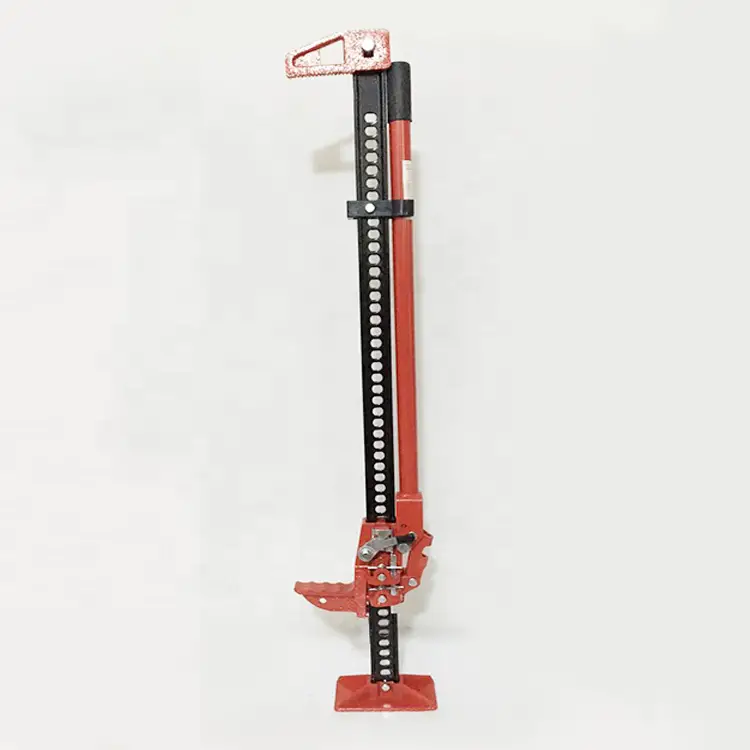
Irrigation System
An irrigation system is necessary to maintain pastures and other plant growth, such as crops or hay.
Solar Panels and Lighting System
Solar panels can be a good investment over time for a farm. They help to lower electricity costs in the long run, however there can be some downsides to solar panels, including reduced electricity production if you encounter a string of cloudy or rainy days. Good lighting around the farm is also important. Just because the sun has gone down doesn’t mean the work stops, and it’s important to see what you’re doing.

Security Camera System
Security cameras are excellent to protect your investment in your farm and livestock. You’ll be able to monitor your herd, as well as have a record of accidents or thefts for insurance purposes.
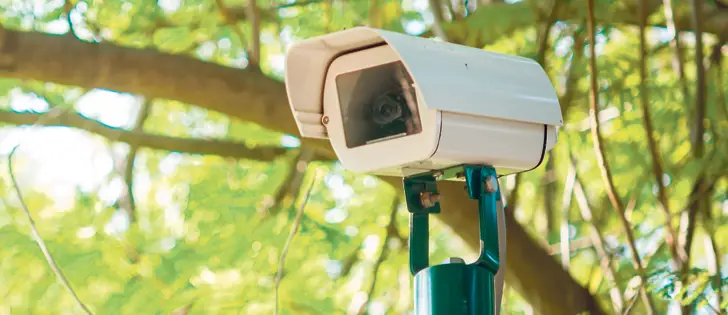
Baby Monitor (yes!)
When dealing with sick or pregnant goats, baby monitors can be useful. You’ll be able to see and hear your goat if they need your assistance, but you won’t have to bother the goat while it gives birth or rests.
Composting System
A good composting system can help reduce waste on a farm and make a farm self-sustaining by recycling the waste to be used as fertilizer.
Electric Tools
Necessary electric tools include a circular saw, an electric drill, a chainsaw, flashlights, and more. All of these are necessary to the maintenance of the farm.
Hand Tools
Other tools such as wrenches, pliers, screwdrivers, utility knives, and more are necessary on a farm.
Farm Equipment Storage
Storage is key for your equipment. It protects your equipment from the elements and gives you a place to work on things if repairs are needed. Necessary storage includes:
Shed
You’ll need a shed to park your tractor/ATV/other machinery, as well as to store things like feed, ropes, halters, hay, etc.
Bins
Bins are always useful on a farm. Different sizes can be used to store different things. There can never be a shortage of bins.
Bins
Bins are always useful on a farm. Different sizes can be used to store different things. There can never be a shortage of bins.
Goat Shelters and Enclosures
Housing and pens are important for your goats. The proper shelters and coverings are necessary to keep them out of the heat in the summer and to keep them warm in the winter. Proper enclosures are also necessary, as goats can be quite the escape artists! The different types include:
Shelter, Barns and Houses
Different shelters are needed for different climates and seasons. In the summer, a simple shelter for the goats to get out of the sun or rain may be all that’s needed. In the winter, something more enclosed may be necessary, such as a barn with a heat source.
Cages
Cages can be necessary to keep goats separate from the rest of the herd, such as when giving birth or ill.
Pens
Pens are essential to keep your goats from wandering and making sure they have adequate room to roam and graze.
Fencing
The proper fencing is needed to ensure the safety and containment of the goats. Some types of fencing may be more adequate for your goats than others.
Bedding
Bedding is necessary for keeping goats warm and giving goats comfortable places to sleep, have their kids, or heal from illnesses. Different types of bedding may be more suitable for your goats than others.
Blankets
Blankets are necessary during the cold or rainy months. Different blankets are made of different materials and suitable for different types of cold or rainy weather.
Farm Transportation Supplies
Being able to transport your supplies and your livestock around the farm are extremely important. It’s also important to have the right equipment to take your livestock from your farm to a veterinarian or to market. Some of the things you may need include:
ATV
ATVs are excellent for doing work around the farm. They allow you to transport materials from one place to another with relative ease. They also are easy to equip with attachments to help with farm work.
Trailer
Trailers are necessary to move the goat herd from one spot to another, including to another pasture or to the vet or market.
Wagons and Handcarts
Wagons and handcarts are handy for transporting heavy or bulky items, such as hay or feed bags.
Haulers, Totes, Transport Cages, & Truck Boxes
Haulers, totes, and truck boxes are useful for when you need to transport one or two goats at a time. They can be put in the back of a truck and are easy to remove and maneuver.
Handling Systems, Head Gates, and Chutes
Handling systems are crucial for when you need to do things with the goats such as milking or administering medicine/vaccines. Handling systems are safer for the goat, restricting their movement and preventing them from injuring themselves or the handlers if they become unruly.
Goat Feeding Supplies
Keeping the goats fed is one of the most important jobs a goat farmer has! Here is a list of items that would make keeping your animals fed an easier task:
Feeder
Feeders are great for feeding multiple goats at a time or for putting out mixed types of food for the goat, such as grain and hay.
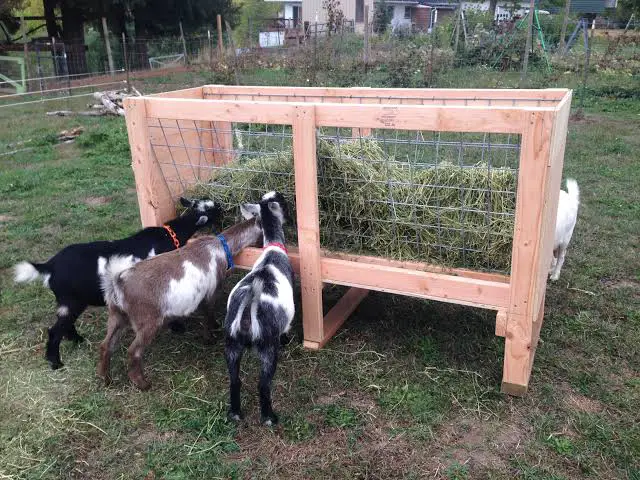
Food Bowl
Food bowls are good for feeding a single goat or small goats. They can be used to hold food or water and are easy to move around from place to place as needed.
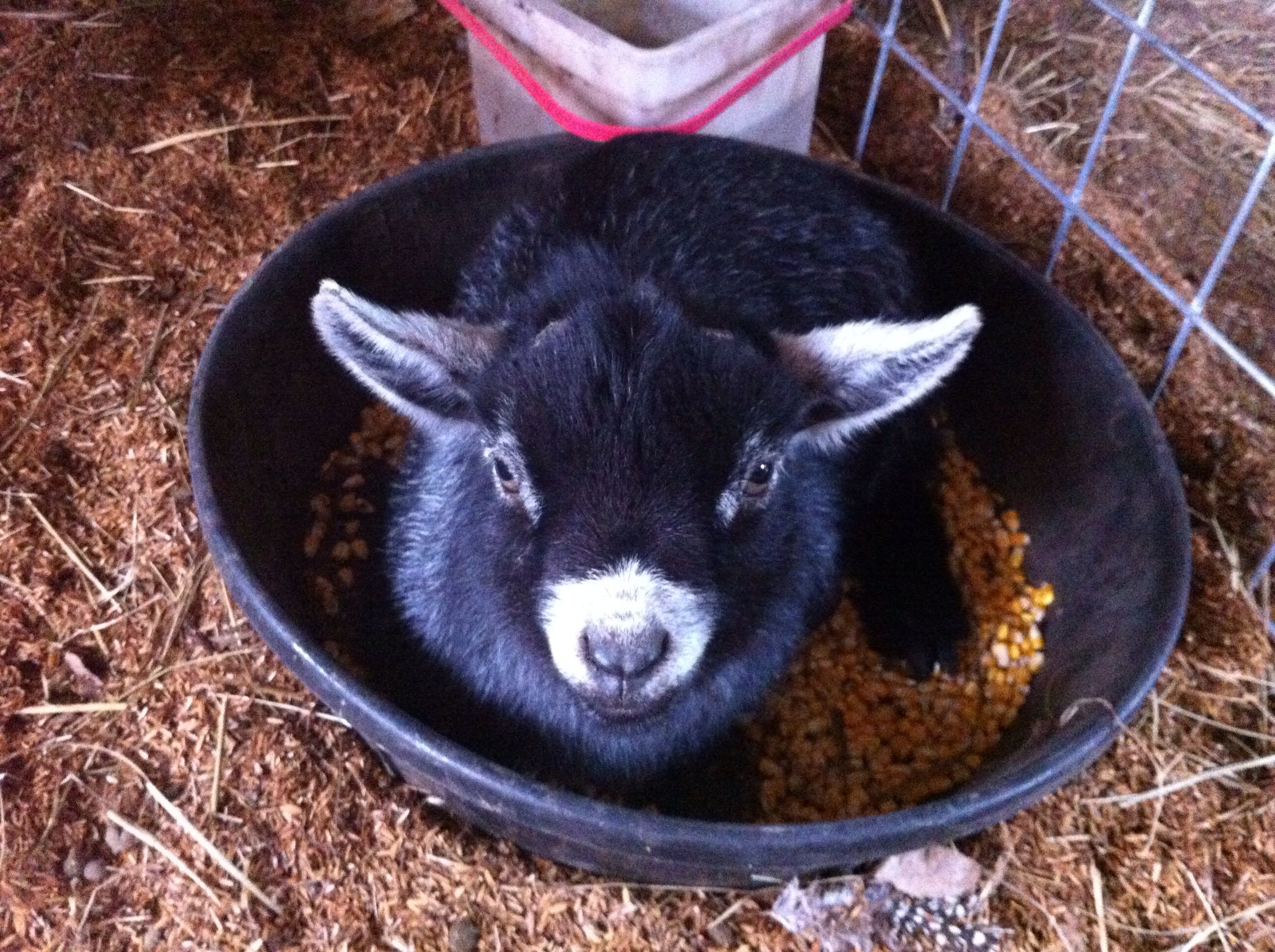
Water Buckets and Troughs
Buckets or troughs for watering your goats are a must. They provide water to your goats and come in different sizes to accommodate different enclosures or pens.
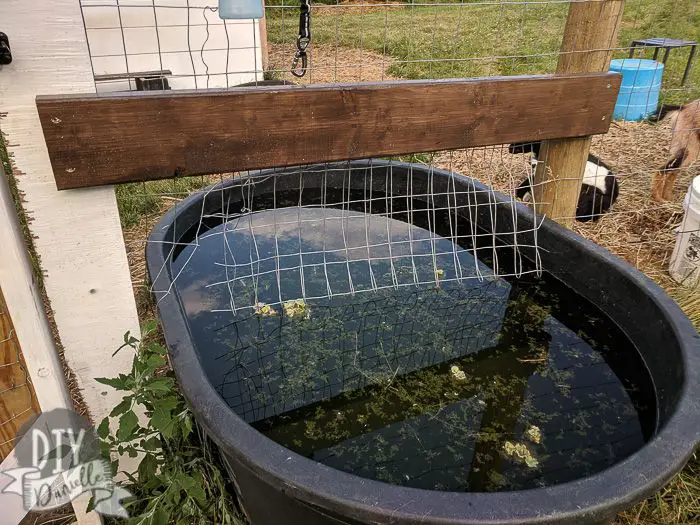
Water Heater (for cold climates)
Dehydration is still a concern for goats, even in the cold months. A water heater is essential to make sure the trough stays defrosted, and the goats have running water to drink.
Hay Bin or Bag
Hay bins or bags are useful for keeping wasted hay down. This helps to cut costs on hay, as the goats eat more than they spread on the ground. Bags are also easy to move around the farm as needed.
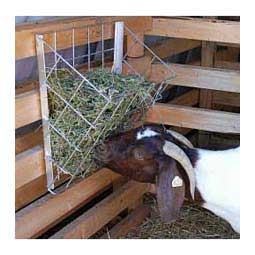
Pallets (for raising hay off ground)
Pallets keep the hay bales off the ground and prevent them from becoming moldy and unsuitable for the livestock to eat.
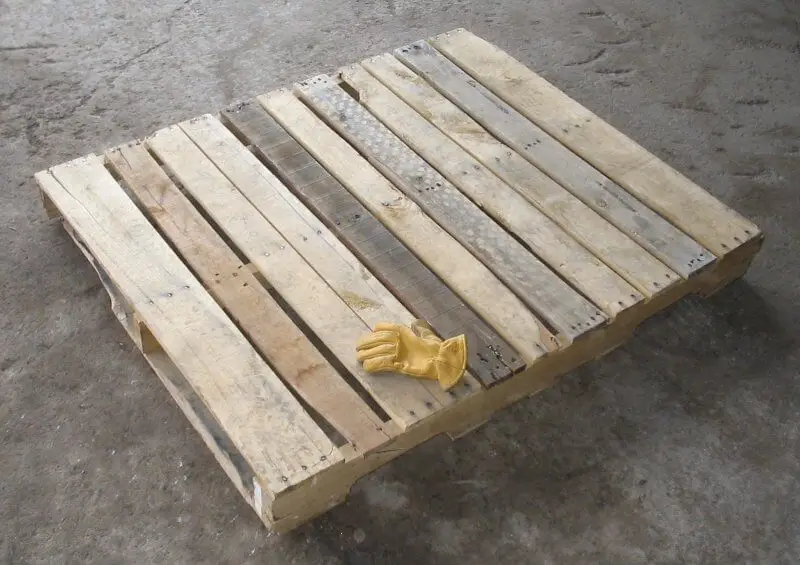
Weight Scale (for feed)
Weight scales can be helpful for measuring the correct amount of feed for your goats.

Goat Health Supplies
Keeping your goats healthy is extremely important to keeping your farm running. If the goats are sick, the illness can spread through the rest of the herd and impact your bottom line. To help take care of sick goats, here are some things you may need:

Thermometer
There will be times when it’s necessary to check your goat’s temperature. A good thermometer is crucial.
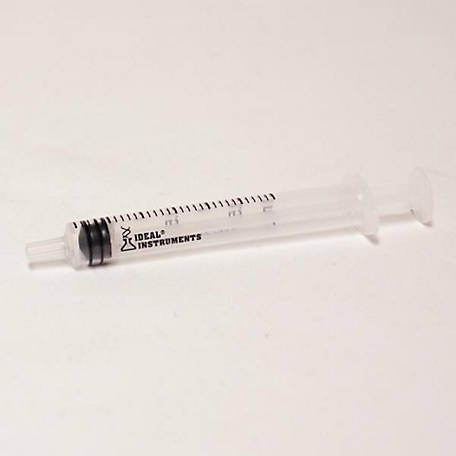
Syringes
Syringes are necessary to administer some medications, such as antibiotics, and can also have other uses. Keeping a syringes on-hand is always a good idea.
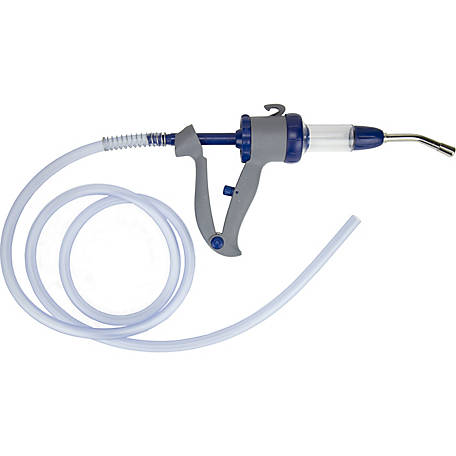
Drencher or Drench Gun
Drenchers can be necessary to deworm your goats or administer other medications. They are sometimes easier to use than syringes and can make administering wormer or medication to your herd faster and easier.
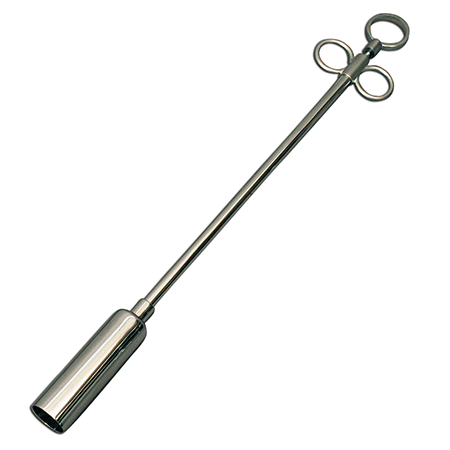
Balling Gun
Balling guns are useful for administering pills and other such things. It can be difficult to give pills to goats, so a balling gun is a good tool to have.
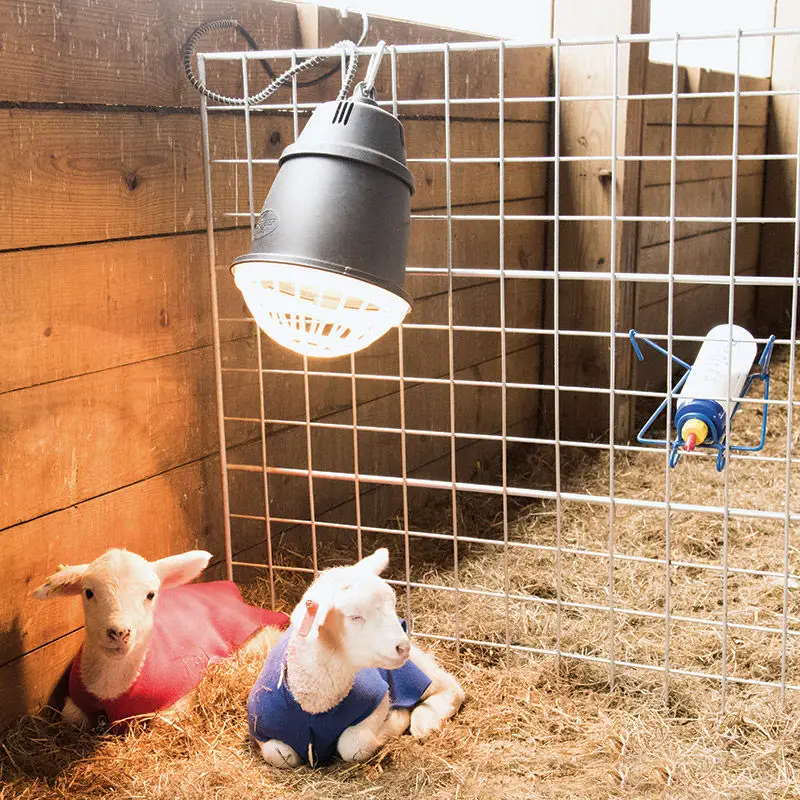
Heat Lamp (to warm sick animals)
Heat lamps have various uses around the farm, but they can be a good healthcare tool to help sick goats stay warm while they recover.
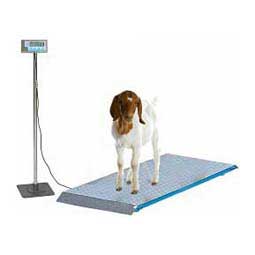
Weighing Scale
It can sometimes be necessary to know the weight of your goats, especially to administer the correct doses of medications. A weight scale is an easy way to know how much your goats weigh.
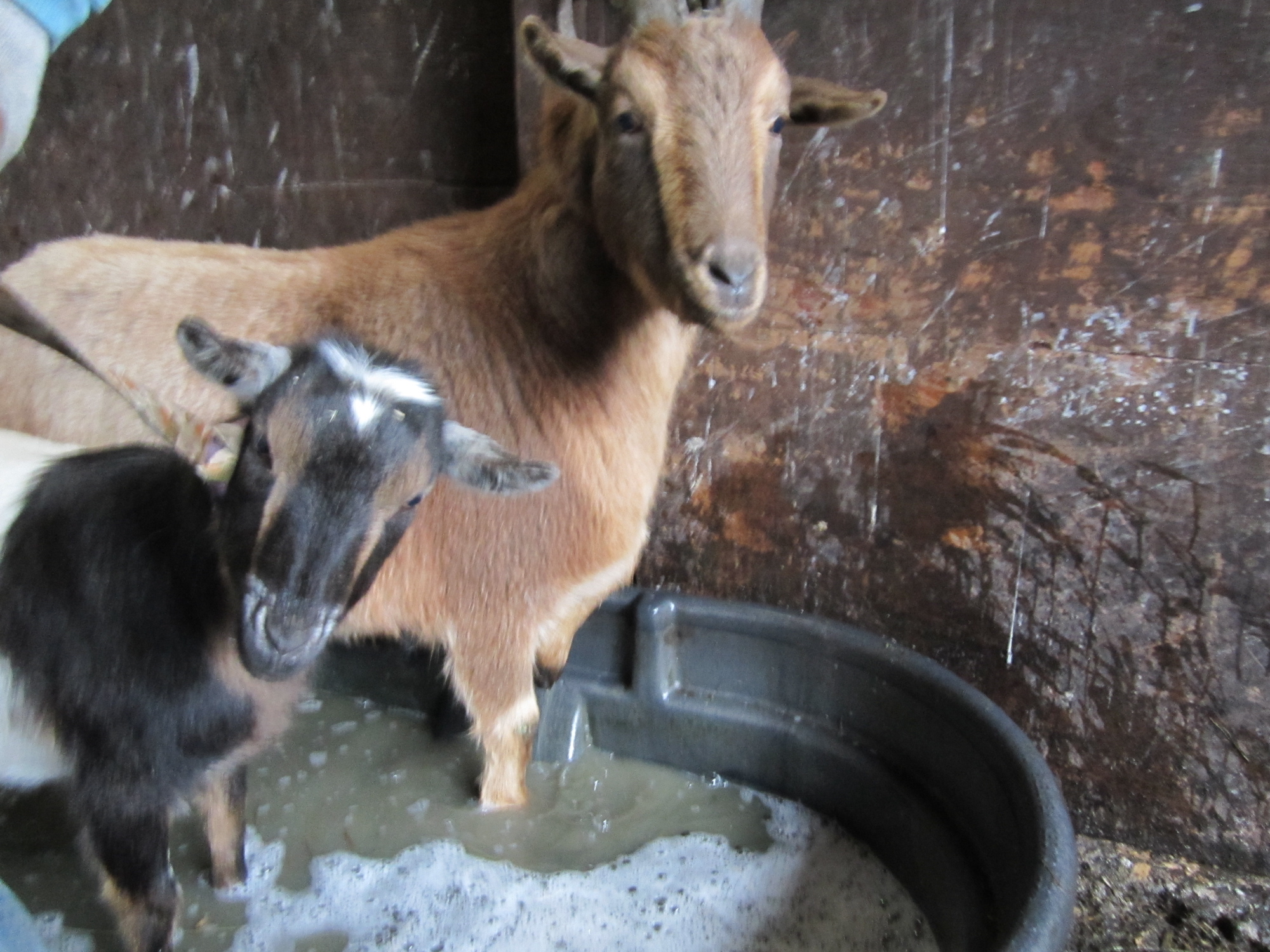
Foot Bath
Sometimes goats can get sore feet or become lame. A foot bath is always a good idea for goats that may need their feet or legs soaked to ease the soreness.
Goat Training Equipment
It may be necessary in some instances to move your goats from pen to pen or other short distances, requiring some type of harness or lead. Here is a list of things you may need:

Harnesses, Halters, and Collars
Harnesses and halters are useful to lead your goat around. They are easy to put on and easy to remove once your goat is where it needs to be. Collars are also useful for controlling your goats.
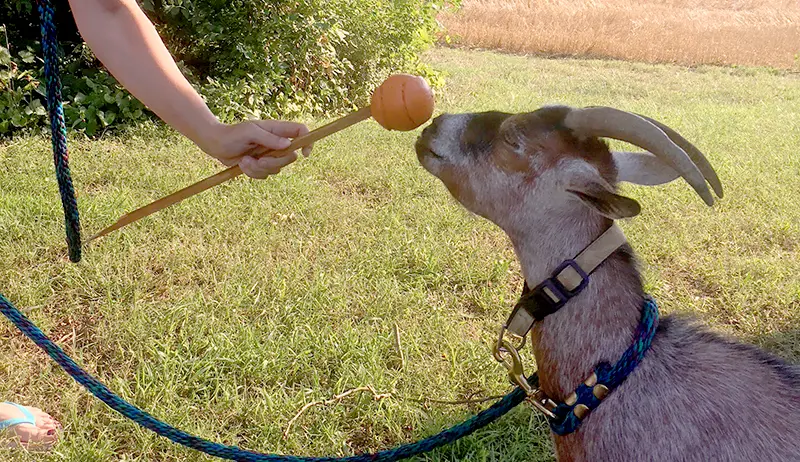
Leashes
Harnesses and halters are useful to lead your goat around. They are easy to put on and easy to remove once your goat is where it needs to be. Collars are also useful for controlling your goats.
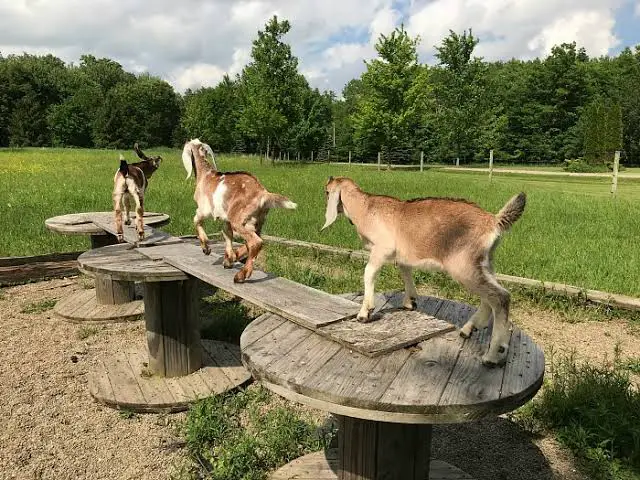
Playgrounds and Toys
Goats need mental stimulation to keep them from becoming destructive. Goat play areas and toys are always a good idea.
Goat Grooming Supplies
Some goats require more grooming than others, so it may be necessary to have grooming tools on hand. Here is a list of things you might need:

Clippers or Trimmer
A good set of clippers or trimmers can be invaluable in keep your goat’s coat maintained. They’re much easier and quicker than scissors or other tools.
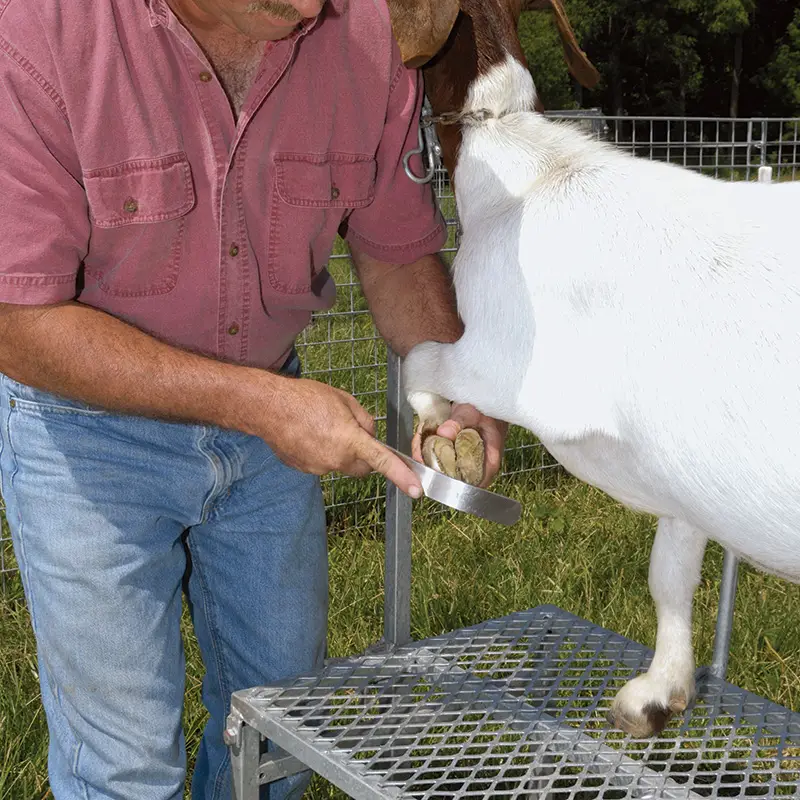
Pinchers or Nippers and Hoof Files
Like humans, goats’ hooves grow continuously over their lifetime. It will be necessary at times to trim your goat’s hooves, and a good pair of pinchers or nippers is crucial. It is also necessary to have a good hoof file on hand to do work to your goat’s feet as needed.
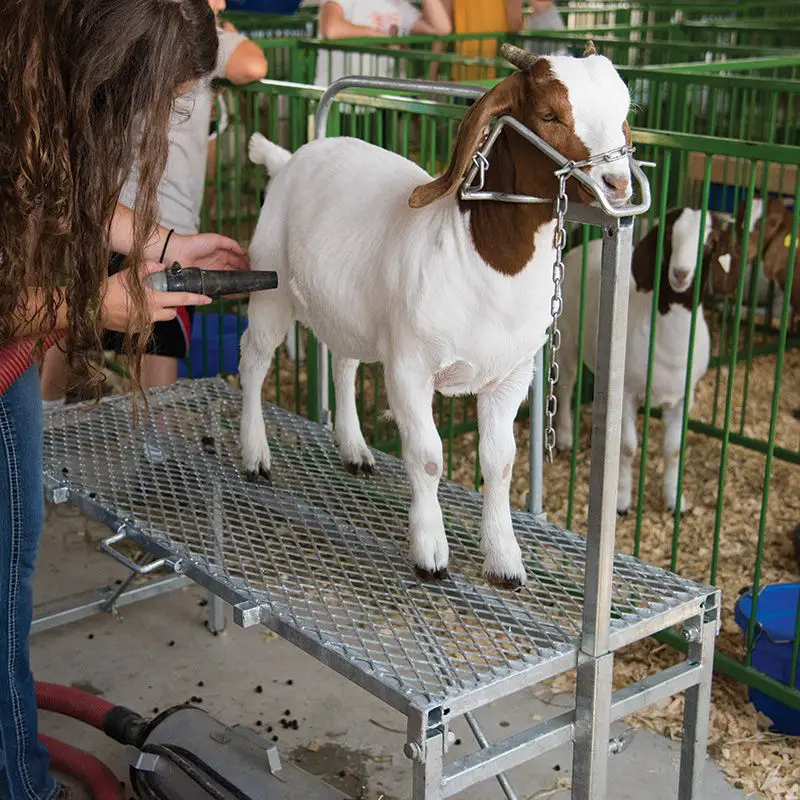
Grooming Stand and Brushes
Goats don’t like to stand still for long periods of time, so a grooming stand would come in handy to keep your goats still. A good set of brushes is also good for helping to keep your goat’s coat in good condition.
Goat Kidding Supplies
Kids are an important part of keeping your farm profitable. It is important to have the right supplies on hand for when your pregnant goats give birth. Those things include:
Stalls or Pens
Separate pens for your pregnant goats are a good idea. It gives them a safe and quiet to place to have their kids and eases stress on the mother. When the weather is poor or cold, a stall is a good place for a pregnant goat to stay out of the elements comfortably and have her kids.

Kit
Kidding kits are always a good idea. Sometimes the mother may need help, and it’s always a good idea to have the necessary supplies on hand.
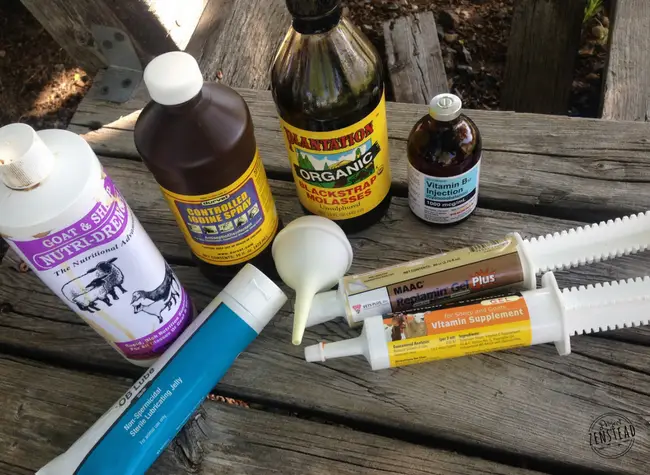
Goat Milking Supplies
If you plan to milk your goats, there are some things you will need to increase your productivity:
Milking Stand or Stanchion
Goats can sometimes be ornery when it is time to milk them, so having a place to restrain them can be necessary.
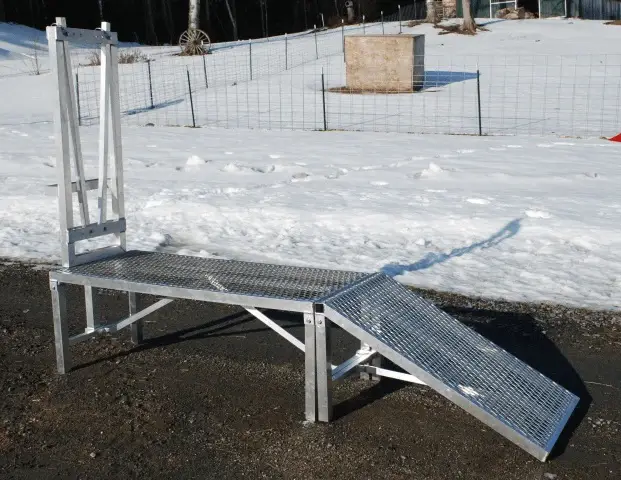
Motorized Milking Machine
If you plan to milk your goats in order to make things, such as cheese, as part of your business, it may be necessary to have automatic milking machines to maximize your productivity. Machines allow you to milk multiple goats at one time, versus only being able to milk one goat by hand at a time.

Hand-Milking Machine or Vacuum
To save your hands or make it easier to milk multiple goats, hand vacuums or pumps can be a good tool to have.

Hobbles
Hobbles can be necessary to keep your goats still while you milk them if you don’t have a milking stand.

Milk Strainers, Double Boilers, Jars (and more)
If you plan to sell your goat milk, you will need tools such as these to prepare the milk after you have retrieved it from your goats. You’ll also need tools such as a chiller or freezer to store the milk, and coolers to transport the milk.
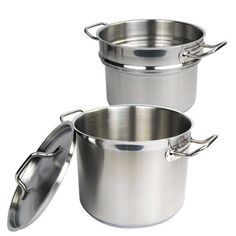
Goat Care And Supplies Video
Conclusion
Every goat has a distinctive personality, and every goat owner should feel free to find the supplies and systems that work best for them and their herd. But this supply list should help every goat owner plan and anticipate what they will need in order to keep and care for happy, healthy goats.




